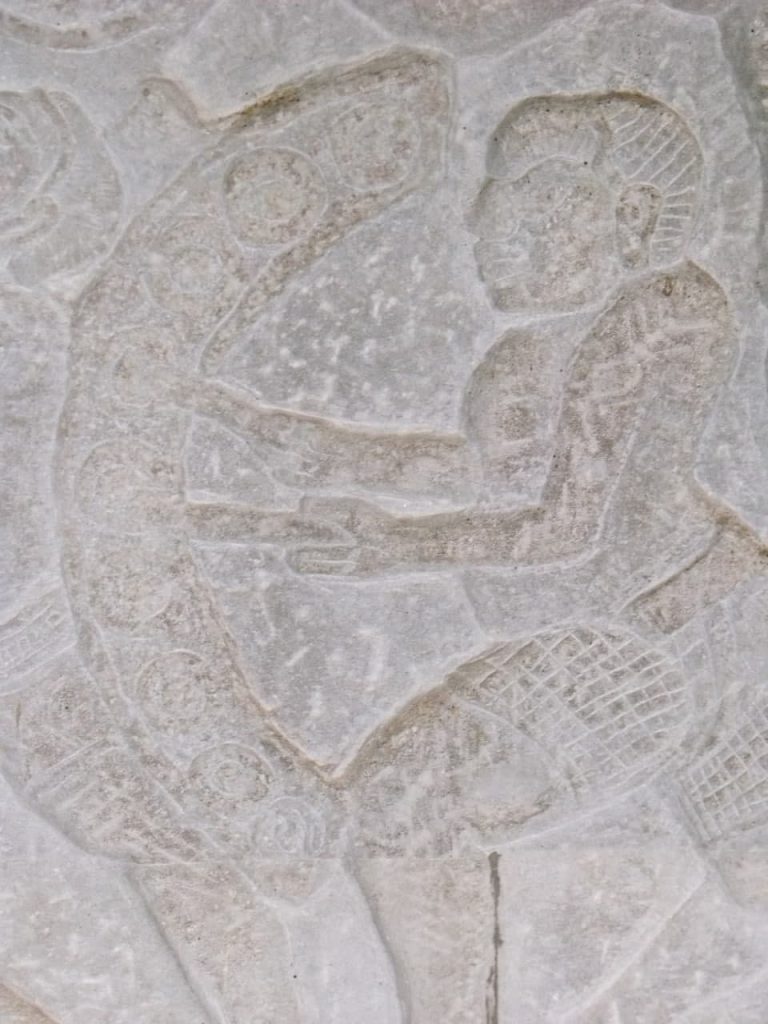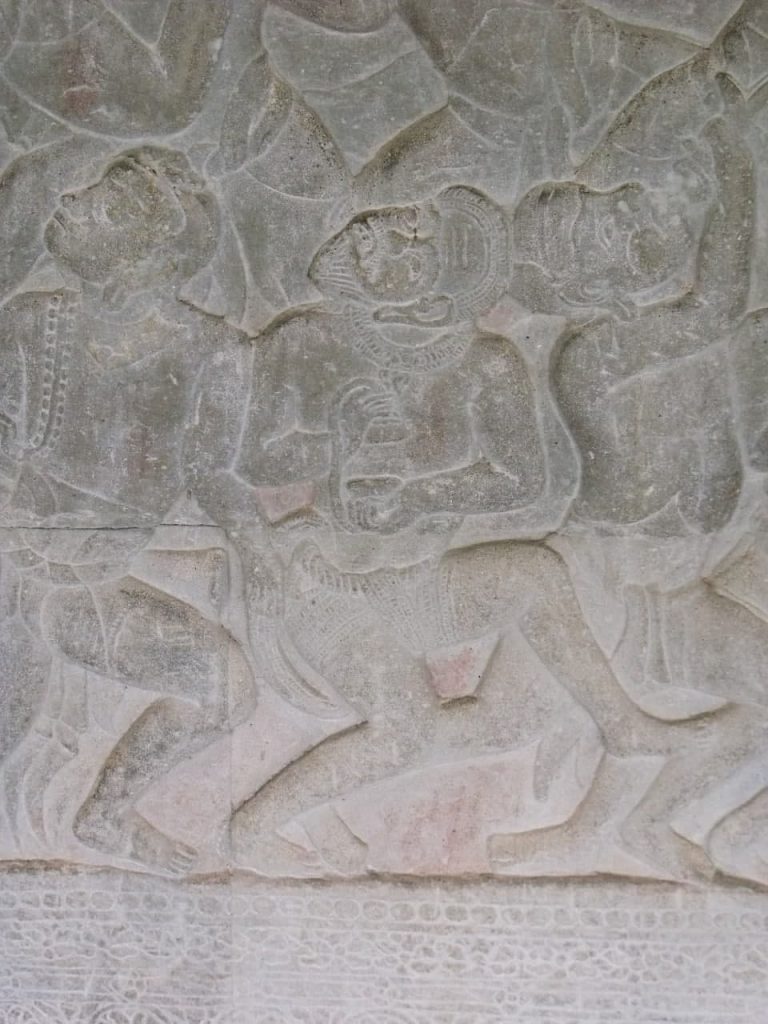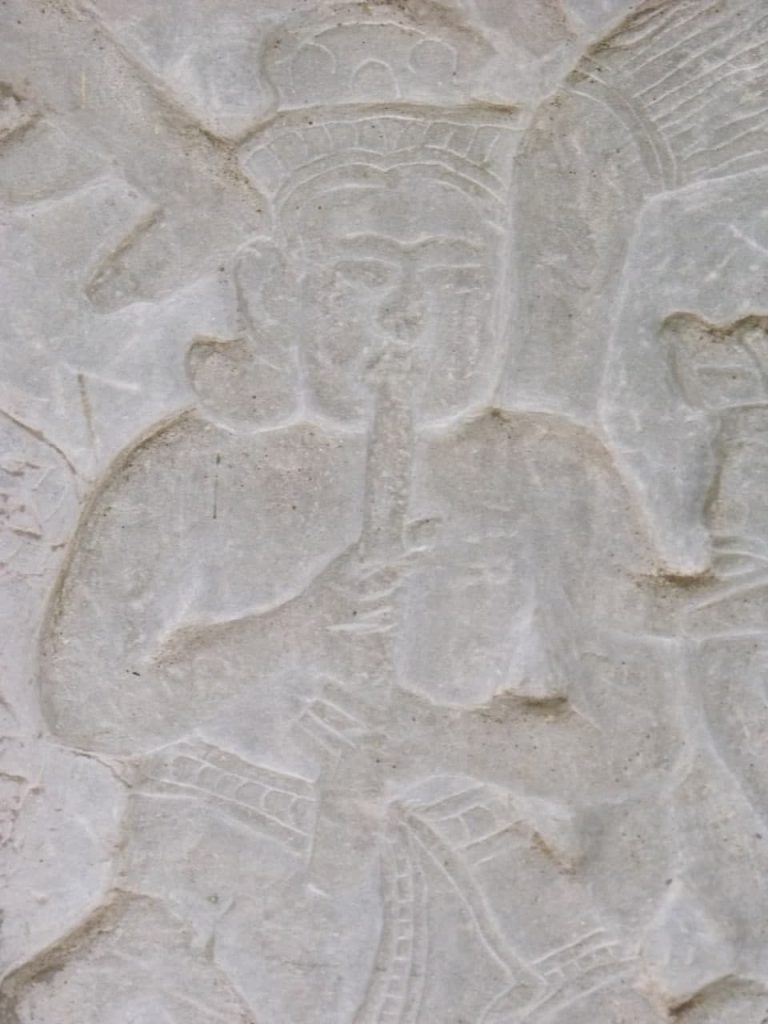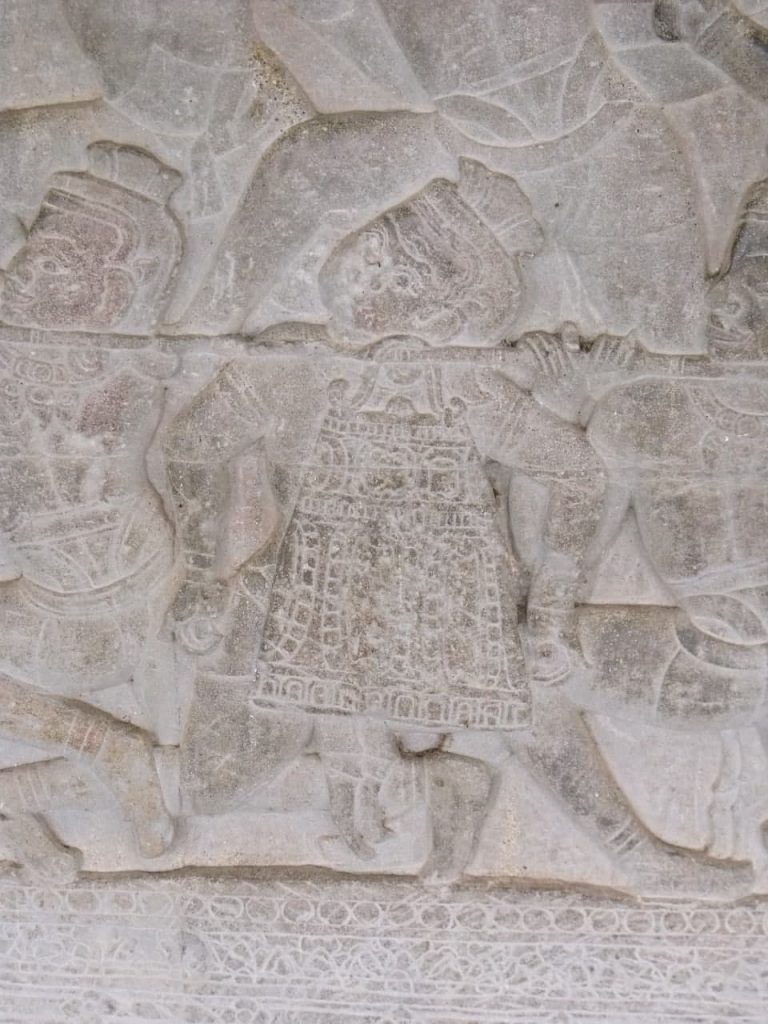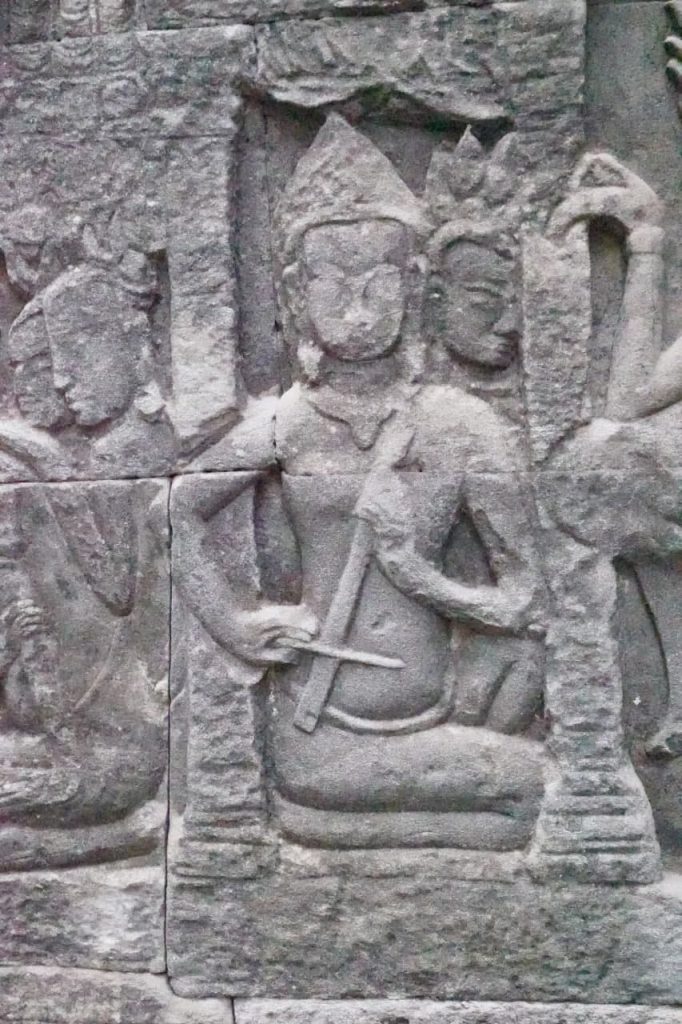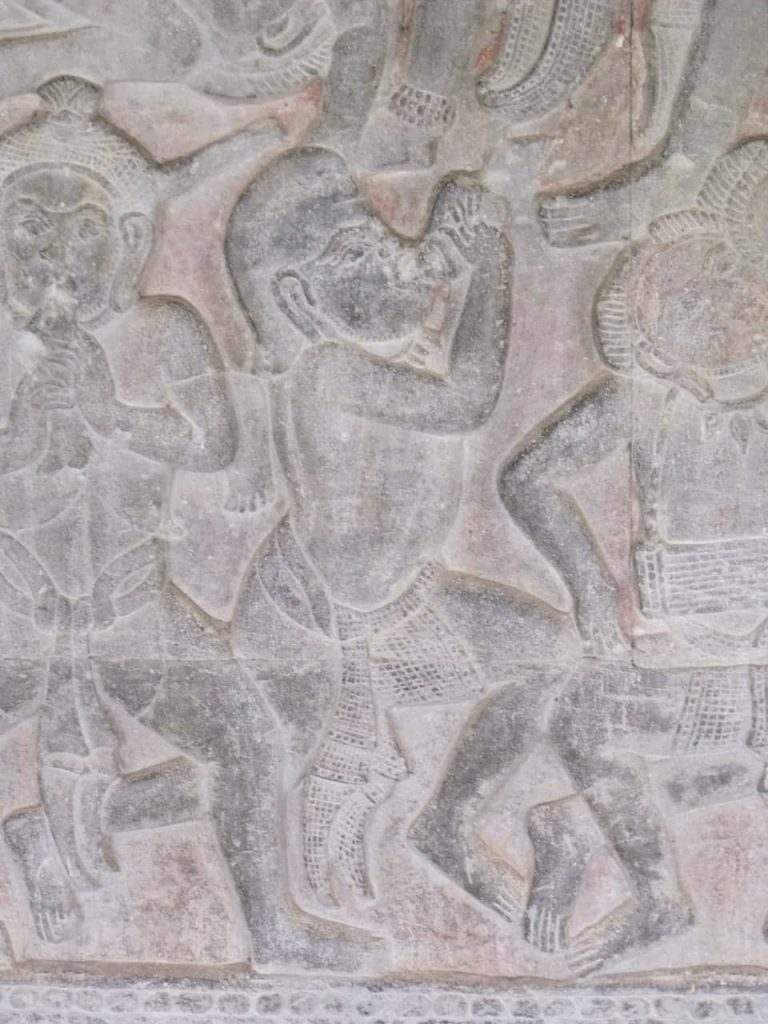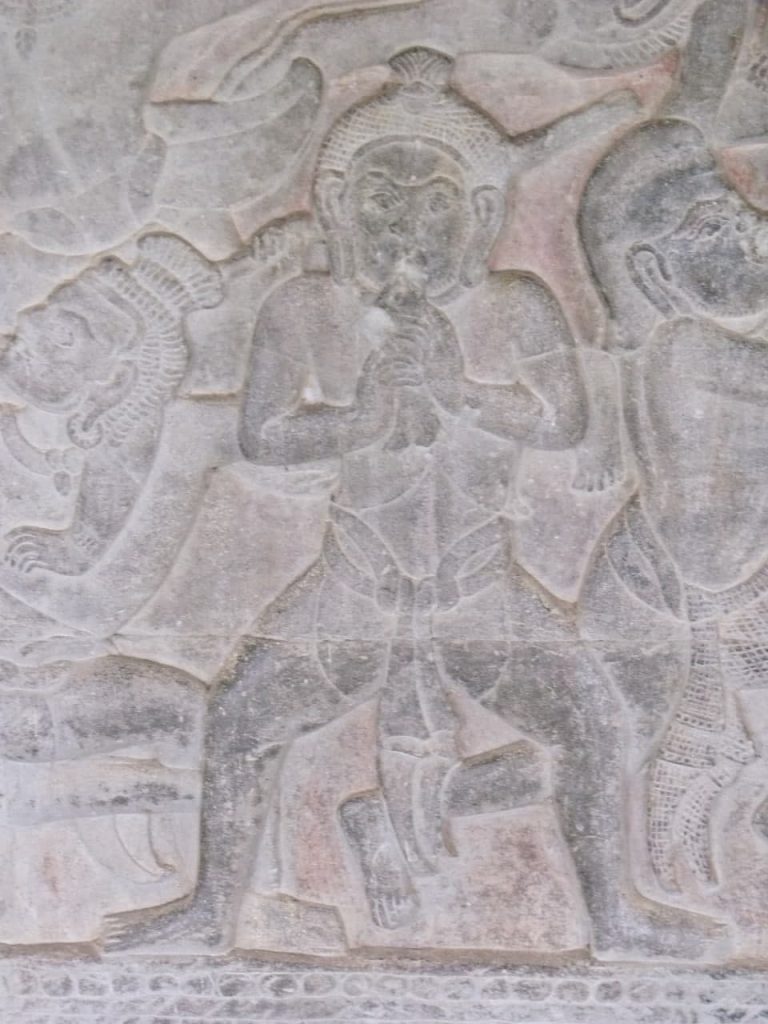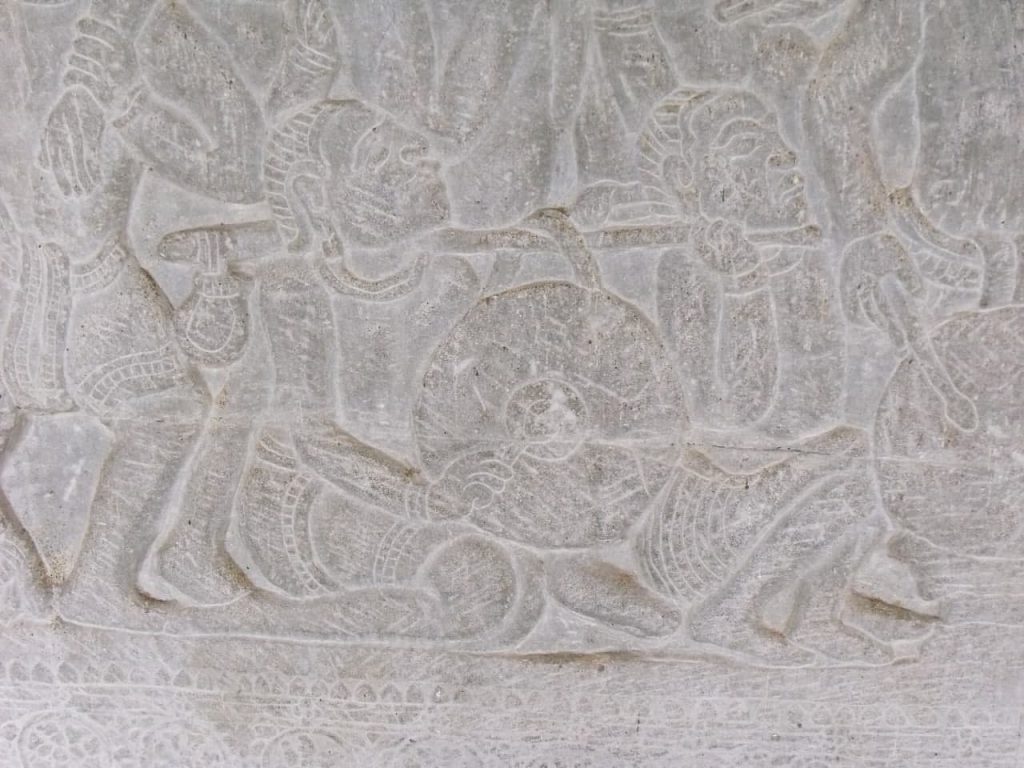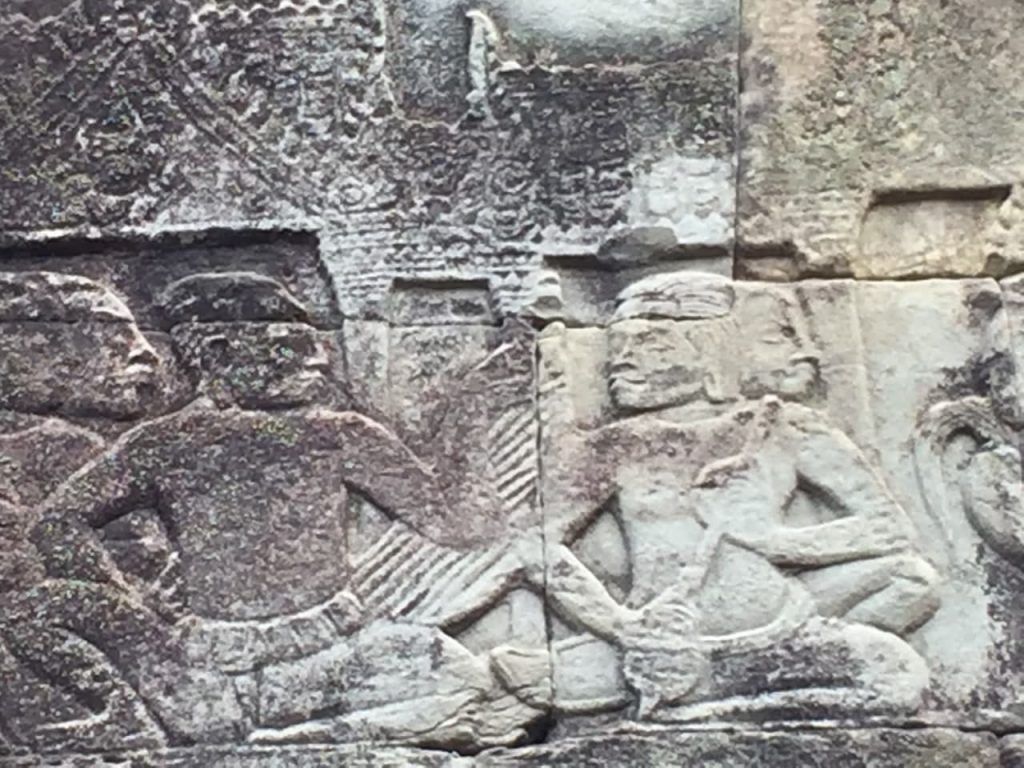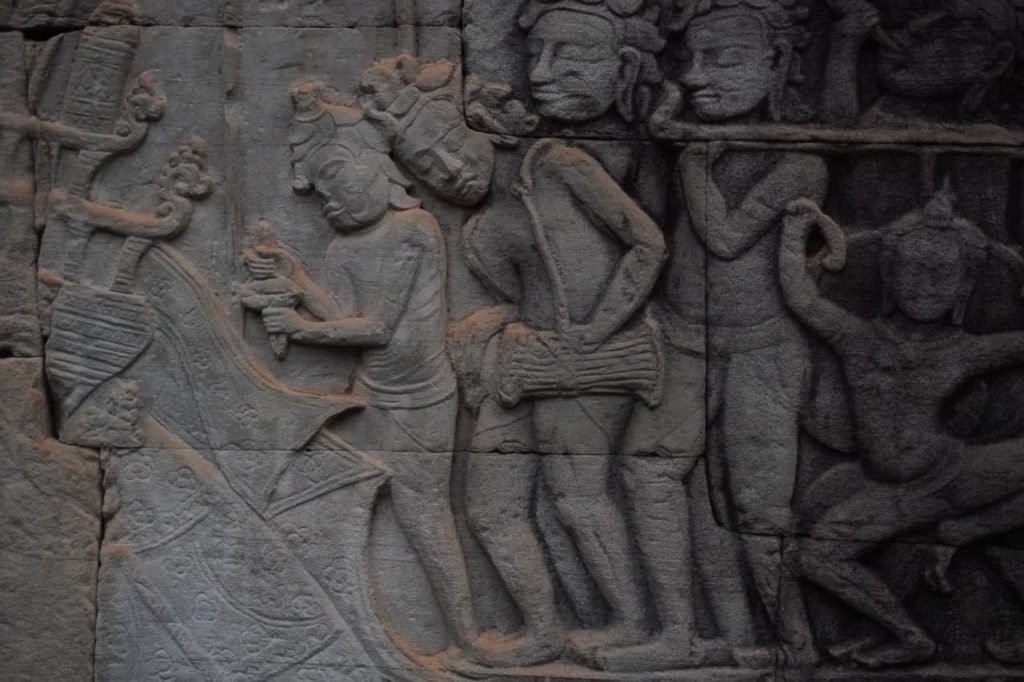អត្ថបទនេះ ជាសង្ខេបបទនៃអត្ថបទវែងរបស់ខ្ញុំលើប្រធានបទខាងលើ។ ទី១ កន្លងមក យើងឃើញថា មានតែបរទេសទេដែលបានសរសេរស៊ីជម្រៅទៅលើប្រធានបទពាក់ព័ន្ធនឹងឧបករណ៍តន្ត្រីបុរាណខ្មែរនាសម័យមុនអង្គរនិងអង្គរ។ ទី២ អំណះអំណាងនៅលើចំណុចមួយចំនួននៅក្នុងអត្ថបទទាំងនេះ ដូចជាឧបករណ៍ «ចាប៉ី និង រនាត» ជាដើម ជាអំណះអំណាង ជាការបកស្រាយ និងជាសំយោគមតិផ្ទាល់ខ្លួនដោយគ្មានឯកសារជាក់លាក់រឹងមាំមកគាំទ្រ ព្រោះយើងគ្មានឯកសារគ្រប់គ្រាន់។ ខ្ញុំចោទជាសំណួរថាតើយើងមានឧបករណ៍ចាប៉ី និង រនាតដែរឬទេនាសម័យនោះ?។ បើមាន ហេតុអ្វីបានជាគេមិនឆ្លាក់ឧបករណ៍ទាំងនោះនៅលើជញ្ជាំងប្រាសាទដូចឧបករណ៍ឯទៀត?។ ឯកសារពាក់ព័ន្ធនឹងឧបករណ៍រនាតនៅក្នុងតំបន់អាស៊ីអាគ្នេយ៍ចង្អុលបង្ហាញថា រនាតមានដើមកំណើតនៅក្រោយសម័យអង្គរ។ ទី៣ សំណេរខ្លះ មានការភាន់ច្រឡំរវាងឧបករណ៍ «គង» ថាជា «រនាត»។ ទី៤ អំណះអំណាង ការបកស្រាយនិងសំយោគមតិទាំងនេះ ជាវិធីសាស្ត្រ «កាត់ក្បាលតម្រូវមួក» មិនមែន «កាត់មួកតម្រូវក្បាល» នោះទេ។ ទី៥ ទោះជាយ៉ាងនេះក៏ដោយ ខ្ញុំយល់ឃើញថា វាជាជំហាននិងចំណុចចាប់ផ្តើមល្អ ដែលទាំងបរទេស ជាពិសេសទាំងយើងជាខ្មែរ ត្រូវបន្តធ្វើការសិក្សាស្រាវជ្រាវស៊ីជម្រៅបន្ថែមទៀត ទៅលើប្រធានបទនេះ ដើម្បីឈានទៅដល់គោលដៅនិងសម្រេចបាននូវភាពសុក្រឹត។
នៅក្នុងអត្ថបទខ្លីនេះ ខ្ញុំធ្វើការសិក្សានិងពិនិត្យទៅលើរូបចម្លាក់និងសិលាចារឹកដែលបង្ហាញនិងរៀបរាប់អំពីឧបករណ៍តន្ត្រីបុរាណខ្មែរនាសម័យមុនអង្គរនិងអង្គរ។ ខ្ញុំប្រើពាក្យ «អង្គរ» ដោយសំដៅទៅលើប្រាសាទនានានៅក្នុងតំបន់អង្គរ ពោលគឹមិនត្រឹមតែប្រាសាទអង្គរវត្តតែមួយប៉ុណ្ណោះទេ។ ក្នុងបណ្តាប្រាសាទបុរាណខ្មែរនានា មានប្រាសាទ សំបូរព្រៃគុក ភ្នំជីសូរ អង្គរវត្ត បាយ័ន បាពួន លានជល់ដំរី ធម្មានន្ទ បន្ទាយឆ្មារ បន្ទាយសម្រែ លលៃ មេបុណ្យខាងកើត ព្រះពិធុ និងប្រាសាទតូចៗមួយចំនួន ដែលមានចម្លាក់រូបឧបករណ៍តន្ត្រីបុរាណខ្មែរ ឆ្លាក់ជាប់ជាតឹកតាងនៃភាពលូតលាស់រុងរឿងនៃវប្បធម៌អរិយធម៌ខ្មែរ។ ឯប្រាសាទខ្លះ ក៏មានរៀបរាប់នៅក្នុងសិលាចារឹកទៀតផង។ ឧបករណ៍តន្ត្រីទាំងនេះរួមមាន ម៉ិម ពិណ ខ្សែ១ ទ្រស័ង្ខ ស្នែង ត្រែ ស្រឡៃ ខ្លុយ ពាទ្យ គងញី (គងដោះ) គងឈ្មោល (គងរាប) គងតូច គងធំ ឈឹង ឆាប ជួង កណ្តឹង សម្ភោរ ស្គរយោល ស្ករឈ្នះ ស្គរជ័យ និងស្គរធំ។
ខ្ញុំសូមធ្វើការកត់សម្គាល់ថា ឧបករណ៍តន្ត្រីបុរាណខ្មែរខ្លះដែលបានរៀបរាប់ខាងលើនេះ មានការវិវត្តនិងការអភិវឌ្ឍច្នៃប្រឌិតបន្ថែមដែលខ្មែរយើងប្រើប្រាស់នៅក្នុងវង់តន្ត្រីផ្សេងៗនាពេលបច្ចុប្បន្ន ដូចជាវង់តន្ត្រីពិណពាទ្យនិងមហោរីជាដើម។ ដោយឡែក ឧបករណ៍ម៉ិម ដែលឆ្លាក់នៅលើជញ្ជាំងប្រាសាទបាយ័ន នៅមានប្រើក្នុងចំណោមជនជាតិភាគតិចនាភូមិភាគឦសាននៃប្រទេសកម្ពុជា មានគ្រឹង ទំពួន ច្រាយ ព្រៅ ព្នង ជាដើម។ ចំណែកឯឧបករណ៍ពិណ ក៏ខ្មែរយើងបានយកចិត្តទុកដាក់ធ្វើឱ្យរស់ឡើងវិញ ក្រោយពីអវត្តមានអស់រយៈពេលរាប់រយឆ្នាំកន្លងមក៕
————————————————————
KHMER ANCIENT MUSICAL INSTRUMENTS ON THE ANGKOR TEMPLES
The present article is the shorter version of my longer article on the same topic. Indeed, we need to look more deeply into these ancient Khmer musical instruments in question attested by the Khmer carvings and inscriptions. First, extensive writings on the subject have been written by foreigners. Second, some writings, interpretations, and claims on particularly the ancient Khmer zither, lute, and xylophone are personal and rather superficial devoid of reliable references. Were there really zithers, lutes, and xylophones in Cambodia during the pre-Angkor and Angkor periods? If so, why were they not carved on the stone temple walls as other instruments? Existing documents date the origin of xylophones of Southeast Asia to after the Angkor period (Yupho (1960); Kubik (1962, 1963); Jones (1963); Johnston (1972, 1973); Morton (1976); Miller and Chonpairot (1981); Sam (2002)). Third, some writings, as quoted, show confusion between gongs and xylophones (Arsenio Nicolas 2021: 13). Fourth, the approach to these assertions is “cutting the head to fit the hat” rather than “cutting the hat to fit the head.” However, I think it is a good start and a good first step in the right direction toward the goal and perfection.
In this short article, I intend to look into the iconography and epigraphy on the ancient Khmer musical instruments during the pre-Angkor and Angkor periods. I use the word “Angkor” to refer to the various temples in the Angkor vicinity not just the Angkor Wat temple. Among several temples, including Sambaur Prei Kuk, Phnom Chisaur, Angkor Vatt, Bayon, Bapuon, Elephant Terrace, Thormeanun, Banteay Chhmar, Banteay Samre, Lolei, Eastern Mebon, Preah Pithu, and some lesser temples, ancient Khmer musical instrument iconography can be found attesting to the opulence and glory of Khmer culture and civilization, while some temples were mentioned and described in stone inscriptions. The ancient Khmer instrumentarium included memm, pinn, khsae muoy, tror, saing, snaeng, trae, sralai, khloy, peat, knobbed gong, flat gong, small gong, large gong, finger cymbals, large cymbals, bells, small double-headed barrel drum, large double-headed barrel drum, suspended drum, and victory drum.
It should be noted that the aforementioned ancient Khmer musical instruments have been evolved and developed into their present form and are used in the present-day Khmer music ensembles, including the pinn peat and mohori. Besides, the bowed monochord memm can be found among the indigenous ethnic groups Kroeung, Tumpuon, Chray, Prov, and so on in the northeast of Cambodia. The Khmer angular harp pinn has been revived by Khmer musicians after a long absence from the scene for centuries.




